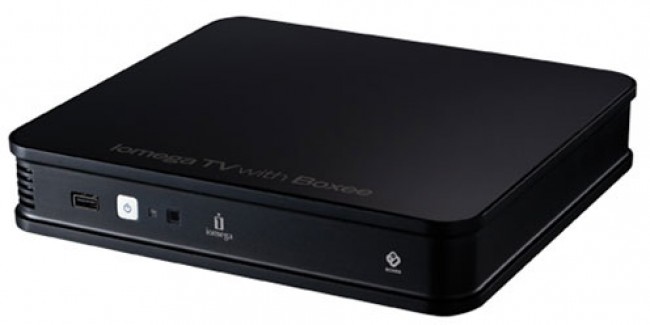
The second coming of Boxee is here. Though D-Link was first to take the popular home theater PC interface and roll it into a standalone device with the Boxee Box, Iomega will take it own shot at the ultimate media streamer in February with Iomega TV.

Number two: It’s going to have built-in storage. A lot of it. Iomega TV will come in both 1TB and 2TB flavors, and Iomega has also thrown in features from its home storage appliances to make content on the box accessible from everywhere. For instance, Iomega’s new Personal Cloud service basically boils down enterprise-level VPN features to a consumer-friendly level. Rather than pushing your photos to Flickr, for instance, you can invite distant family members to your personal cloud and have them view content stored locally on the Iomega TV or another computer on the network.
Despite the subdued chassis design, the business end of Iomega TV – the remote – will pick up more than a few cues from D-Link’s well received design. Like the remote included with the Boxee Box, it features a candy-bar shape with a full QWERTY keyboard on one side and basic navigational controls on the other.

Iomega will launch the Iomega TV in February with an MSRP of $229.99 for a stripped-down version with no storage, and $299.99 and $349.99 for the 1TB and 2TB versions, respectively. Considering a less-than-intrepid home theater enthusiast could upgrade a $200 Boxee Box to 2TB of storage just by stringing up a $100 external drive, Iomega may not be gunning for value, but its high-end sharing features and modified design may still make Iomega TV a compelling choice come February.



